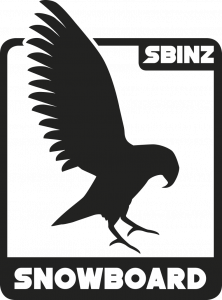Riding Drops, Spines & Windlips
 What, Why, How
What, Why, How
Increase versatility and adaptability of existing freestyle skills to off-trail terrain features.
Example

 Movements & Board Performance
Movements & Board Performance
Vertical & Longitudinal with Pressure
When getting air in natural terrain a slightly aft position can be beneficial. The hips will be slightly aft of centre, maintaining flexion in the leading leg. Extension movements will be subtle from the ankles, knees and hips depending on the drop and approach speed. Using an ollie on takeoff will help the rider to tuck their knees up in the air. Flexion movements will be used in the ankles, knees, hips and curvature of the spine to cope with absorbing the landing of a drop. If needed, extension of the back leg to prepare for landing can help absorb pressure on flatter or powdery landings. Powerful extension through the back leg is required when doing slashes.
Lateral with Edging
Small adjustments will be made in the ankles to control the amount of edge angle during approach and takeoff, often dictated by the natural slope. Ideally, a laterally neutral position will be maintained at takeoff to provide as much stability as possible. Higher edge angles are needed when slashing wind lips.
Rotational with Steering
Rotational movements should be kept to a minimum to promote stability when jumping. Stance adjustments can be made rotationally (i.e. high performance stance) to allow for a larger range of other movements. Powerful and at times separated rotation is essential when slashing.
 Terrain & Group Management
Terrain & Group Management
It is essential to scope the terrain to assess the landing for any rocks or debris that may cause injury. This is especially important with fresh snow that may have hidden natural hazards. A visual assessment of the landing can provide further insight into line choice, expectations of landing and the approach speed needed to clear any hidden surprises.

